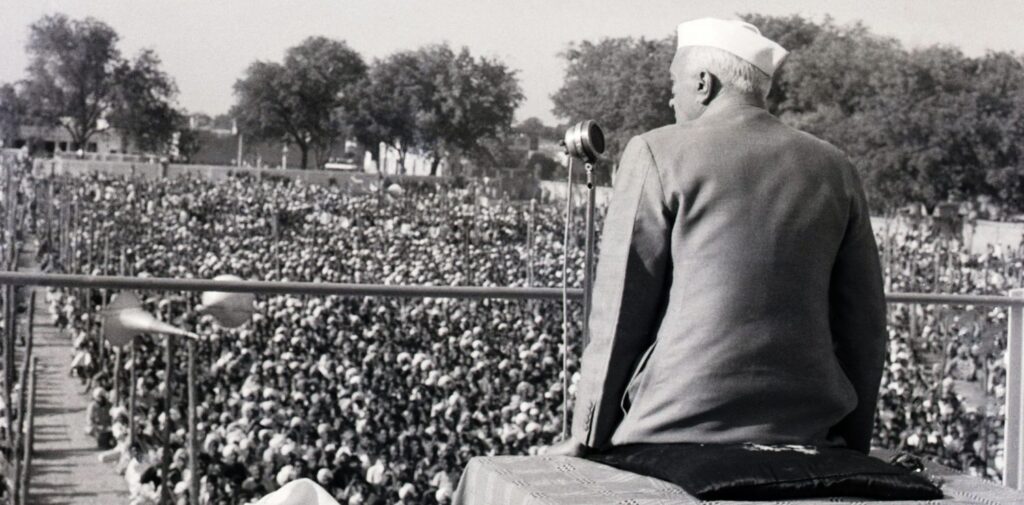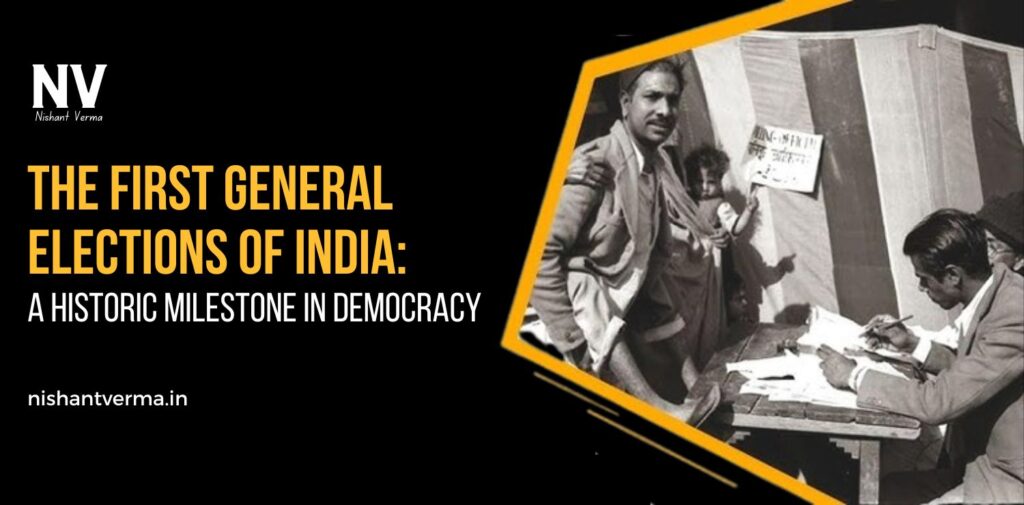The First General Elections of India, held from October 25, 1951, to February 21, 1952, marked a defining moment in the country’s democratic journey. It was a monumental event that not only laid the foundation of India’s electoral system but also demonstrated the resilience and determination of a newly independent nation to build a democratic future. This election remains significant for several reasons—its scale, the challenges faced, and the socio-political impact it had on the nation.
The Road to Independence and the Need for Elections
India gained independence from British rule on August 15, 1947, and immediately, the country embarked on the journey of building a democratic nation. One of the most crucial steps in this process was the creation of a representative government chosen by the people through elections.
The first challenge India faced post-independence was the organization of elections for the Constituent Assembly, which was responsible for drafting the Indian Constitution. The Indian Constitution was adopted on January 26, 1950, and a stable political structure was put into place. However, the need for the first general elections arose to form a functioning government at the national level, as well as at the state level.

The Scale of the Election: A Challenge for the Young Nation
India’s First General Election was held in 1951-52, just a few years after independence, and it was an unprecedented task. The country, still reeling from the effects of partition and dealing with widespread poverty, illiteracy, and political instability, had to conduct elections on a vast scale.
For the first time, millions of Indians were given the power to vote, including men and women from all corners of the country, irrespective of their social or economic status. The electorate in the 1951 elections consisted of more than 173 million eligible voters, making it one of the largest democratic exercises in history at the time. With only about 15% of the population being literate, the elections faced massive logistical challenges.
The Indian Election Commission, headed by Sukumar Sen, had to overcome numerous hurdles such as inadequate infrastructure, lack of communication systems, and illiteracy among the voters. The election process was further complicated by the geographical vastness of the country, with diverse regions and languages that required careful management. The election was conducted in multiple phases, spread over several months, to ensure its smooth execution.
The Political Landscape: The Congress Dominance
Before the first general election, the political landscape of India was largely shaped by the Indian National Congress, which had been the leader of the freedom struggle against British colonial rule. The Congress party, under the leadership of Jawaharlal Nehru, had emerged as the dominant force in Indian politics post-independence. Nehru, who became the first Prime Minister of India, led the Congress party to victory in the first election, which was a reflection of the party’s widespread popularity and trust among the masses.
However, the elections were also an important moment for other political parties, such as the Hindu Mahasabha, the Communist Party of India, and smaller regional parties, who were trying to establish their place in the new democratic framework of the country. Despite their efforts, the Congress party’s national reach, combined with Nehru’s popularity, ensured that it would dominate India’s political scene for several decades.

The Electoral System and Voting Process
India’s electoral system was based on the principles of universal adult suffrage, which was a groundbreaking decision for a nation of India’s size and diversity. In these elections, every citizen, regardless of caste, creed, or gender, was granted the right to vote for the first time. Women, who had previously been excluded from the political process, were empowered with the right to vote along with men.
The election was conducted using paper ballots, and each voter was required to mark their vote on a ballot paper. The election process was carried out in multiple phases, with different states going to the polls at different times, spread across several months.
The election saw the introduction of a first-past-the-post system for electing members to the Lok Sabha (the lower house of Parliament), as well as to the state legislative assemblies. This system meant that the candidate who received the highest number of votes in a constituency would be declared the winner, even if they did not secure an absolute majority of votes.
The Results and the Victory of the Congress
The results of the first general election were declared in 1952, and the Indian National Congress emerged as the clear winner. Out of the 489 seats in the Lok Sabha, the Congress party won 364 seats, securing an overwhelming majority. Jawaharlal Nehru, the leader of Congress, was re-elected as the Prime Minister of India, a position he would hold until his death in 1964.
This victory signified the trust and faith that the people of India had placed in the Congress party and its leadership. Nehru’s vision of a secular, democratic, and modern India resonated with a large section of the population, and the Congress party’s program of economic development, social reforms, and national unity struck a chord with voters across the country.
While the Congress dominated the national scene, the elections also revealed the diversity of India’s political spectrum. Other parties, such as the Communist Party, the Socialist Party, and regional players, made their presence felt, though they were unable to challenge the Congress’s dominance.

The Impact of the First General Elections of India
The First General Election of India had far-reaching consequences for the country’s political future. It marked the beginning of a long and stable tradition of free and fair elections, which would come to define India as the world’s largest democracy. The election also established the legitimacy of the democratic system in the eyes of both the Indian population and the international community.
The success of the election demonstrated the country’s commitment to democratic principles, despite its vast challenges. It also proved that the Indian people, regardless of their background, were capable of participating in the political process and contributing to the shaping of the nation’s future.
The election further solidified the role of political parties in India, with the Congress party emerging as the dominant force for many years. However, it also set the stage for future political competition and the rise of regional parties, which would play an increasingly important role in the Indian political system in the decades that followed.
Conclusion: A Triumph of Democracy
The First General Election of India in 1951-52 was a historic achievement that symbolized the triumph of democracy in the world’s largest and most diverse country. It was a difficult and complex process that required overcoming numerous challenges, but it demonstrated the strength and resilience of the Indian people. The election laid the foundation for India’s future as a democratic nation, and its significance extends far beyond the political outcomes it produced. The first general election not only gave India its first elected government but also set the tone for the country’s long-standing commitment to democratic values.
In the years that followed, elections in India would become a regular feature, reinforcing the principles of representative democracy, free speech, and the rule of law. The first general election remains a powerful reminder of the potential of democratic participation, and it continues to inspire people across the globe who are fighting for the right to vote and be heard.




